The passing of the vernal equinox confirms that our days are filled with more sunlight than nighttime darkness. May you be warmed by the sun's rays and cherish the smell of blooming cherry blossoms, lilacs, magnolias, and prickly pear cactuses.
Along with the welcome change of season has come the International Code Council's first report of proposals for modifications to the Group A Codes:
- International Fire Code (IFC);
- International Fuel Gas Code (IFGC);
- International Mechanical Code (IMC);
- International Plumbing Code (IPC);
- International Wildland-Urban Interface Code (IWUIC);
- International Private Sewage Disposal Code (IPSDC);
- International Swimming Pool and Spa Code (ISPSC);
- International Building Code (IBC)-Egress, chaps. 10-11;
- International Building Code (IBC)-Fire Safety, chaps. 7, 8, 9 (partial), 14, and 26;
- International Residential Code (IRC)-Mechanical, chaps. 12-23; and
- International Residential Code (IRC)-Plumbing, chaps. 25-33.
While exploring these proposals, I became curious about which codes are being discussed the most. I decided to take a deeper look and get answers to three questions: 1) Which ICC Group A Codes have the most proposals; 2) Which IPC chapters have the most proposals; and 3) Which IMC chapters have the most proposals? Frankly, I was a bit surprised by the answers I found. Perhaps you will be as well!
Which ICC Group A Codes have the most proposals?
The top five Group A Codes with proposals are:
- IFC;
- IPC;
- IBC-Egress;
- IBC-Fire Safety; and
- IMC.
FIGURE 1

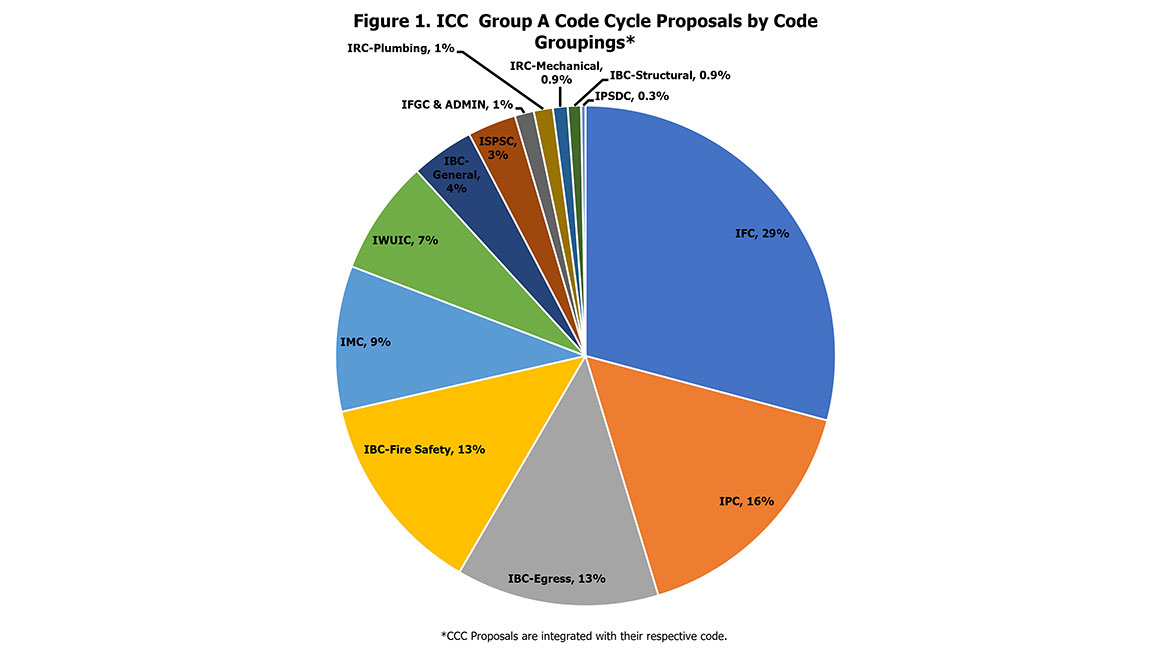
Fire topics make up 50% of the proposals across all the code groupings. IBC topics make up 18% of the proposals, followed by plumbing topics at 17% and mechanical topics at 10%. With most proposals focused on these particular code topics, any changes will likely impact commercial construction more than residential construction. Those who design commercial buildings or design, private label, specify, buy, or sell products for the commercial sectors should anticipate changes to the existing requirements in 2027.
Which IPC chapters have the most proposals?
The top five IPC chapters with proposals are:
- Chapter 15: Referenced Standards;
- Chapter 4: Fixtures, Faucets, and Fixture Fittings;
- Chapter 6: Water Supply and Distribution;
- Chapter 8: Indirect/Special Waste; and
- Chapter 9: Vents.
FIGURE 2

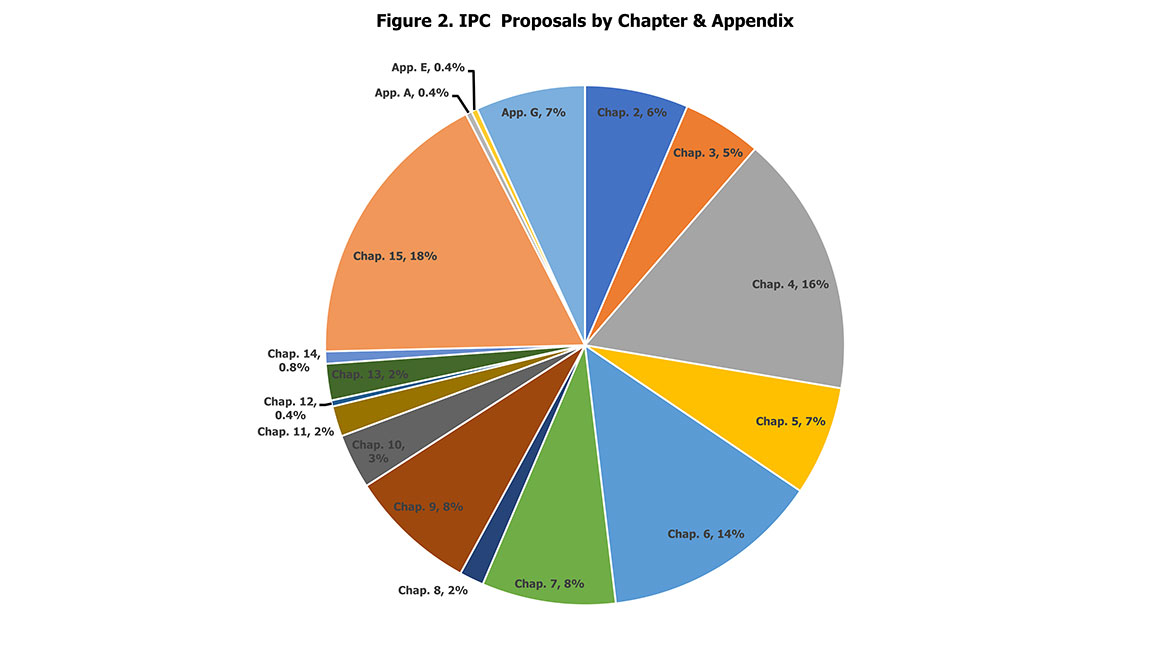
This list of the top five shows a significant increase in newly referenced standards for 2027. Interestingly, only 15% of the new standards are associated with products covered by Chapter 4: Fixtures, Faucets, and Fixture Fittings. Those who design commercial buildings or design, private label, specify, buy or sell products covered by Chapter 4 requirements should anticipate changes to the existing requirements in 2027. Those of you who design commercial buildings or design, private label, specify, buy or sell products covered by Chapters 6, 8 and 9 should anticipate changes to the existing requirements in 2027.
As we look at the IPC proposals with coordinated I-Code proposals in the IRC and IBC, we see that plumbing requirements will likely impact both commercial and residential construction. Those who design residential or commercial buildings or design, private label, specify, buy or sell products for those sectors will likely see changes to the existing plumbing requirements in 2027.
FIGURE 3

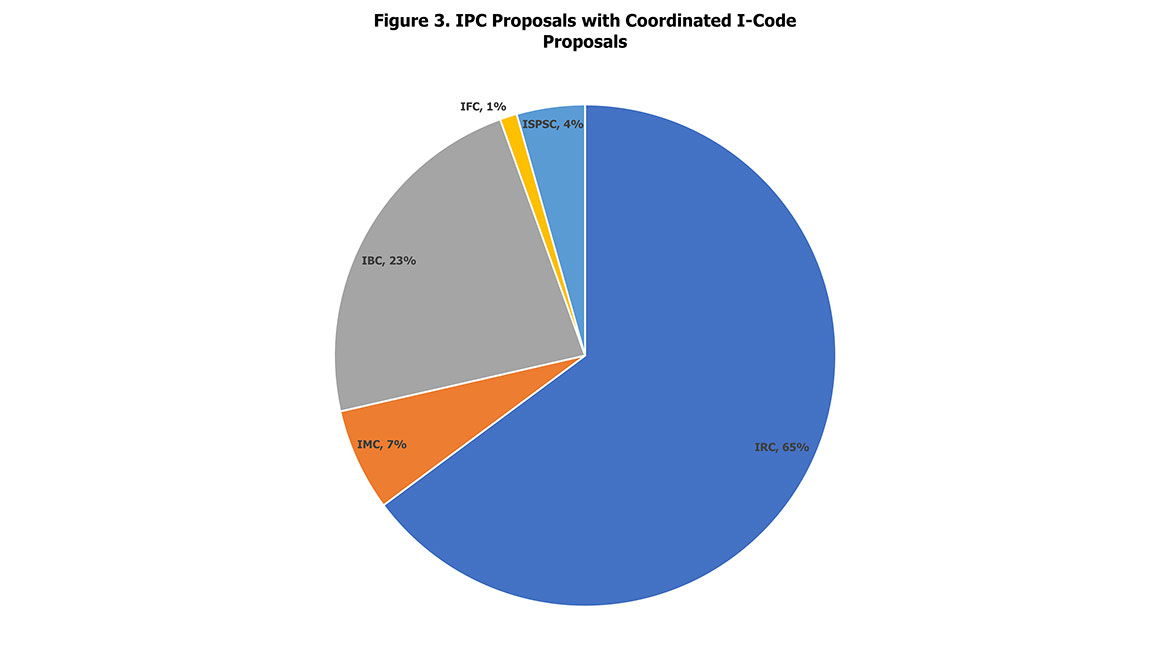
Which IMC chapters have the most proposals?
The top five IMC chapters with proposals are:
- Chap. 11 Refrigeration;
- Chap. 4 Ventilation;
- Chap. 2 Definitions;
- Chap. 15 Referenced Standards; and
- Chap. 5 Exhaust Systems.
FIGURE 4

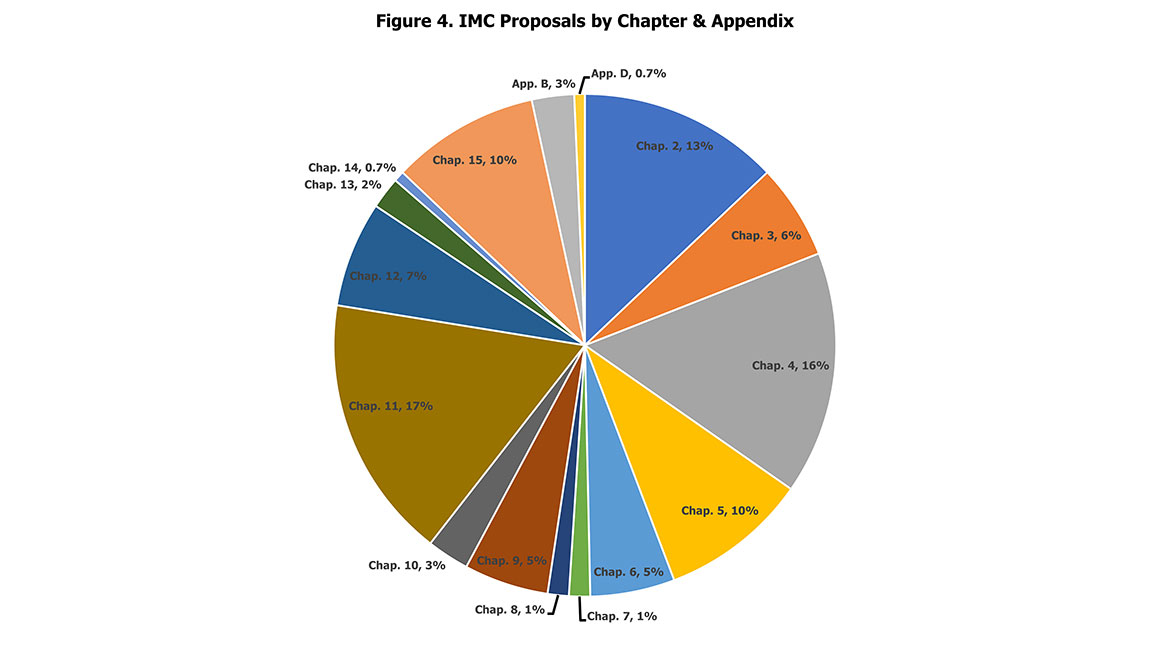
It's not surprising to see refrigeration and ventilation as the front runners due to the prevalence of changes in laws, regulations, and standards over the past three years. These changes are reflected in the proposals in the definition and referenced standards chapters. If you design buildings or specify, buy, or sell products that use refrigerants, the existing mechanical requirements you use will likely change in 2027.
The IMC proposals with coordinated IRC proposals show that mechanical requirements will likely have an equal impact on commercial and residential construction. Those involved with commercial or residential building design or who design, private label, specify, buy or sell products for those sectors should look for changes in the existing mechanical requirements in 2027.
FIGURE 5

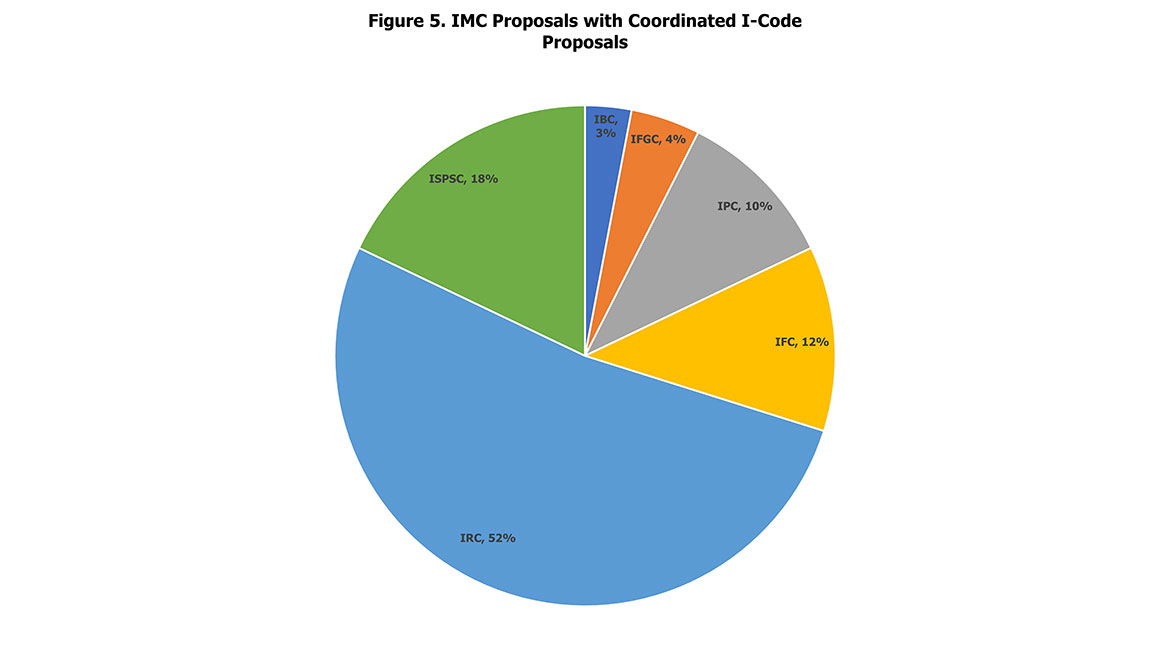
It's interesting to note that there is a high percentage of ISPSC proposals, indicating that there may be new requirements for buildings and products that rely on the ISPSC. If you design buildings or design, private label, specify, buy or sell products covered by the ISPSC, there will likely be new requirements in 2027.
U.S. building and safety codes are integral to product market access, U.S. commerce and public health and safety. For more background on the U.S. codes, read my past articles titled "United States Building and Safety Codes: The International Code Council's New Process," "What Good Are the Base Model Codes?" and "Upcoming 2027 Code Development Cycles." Navigating the code development cycle is complex. Call us at Regulosity for an organization-specific analysis. We can help!




